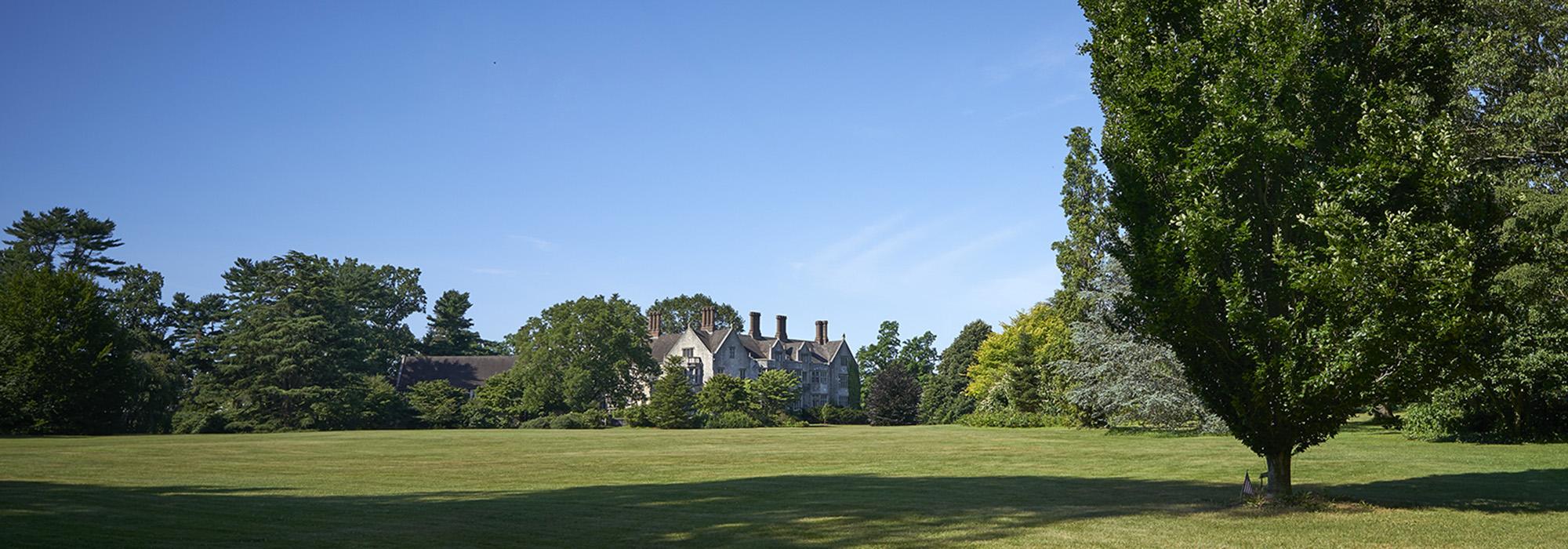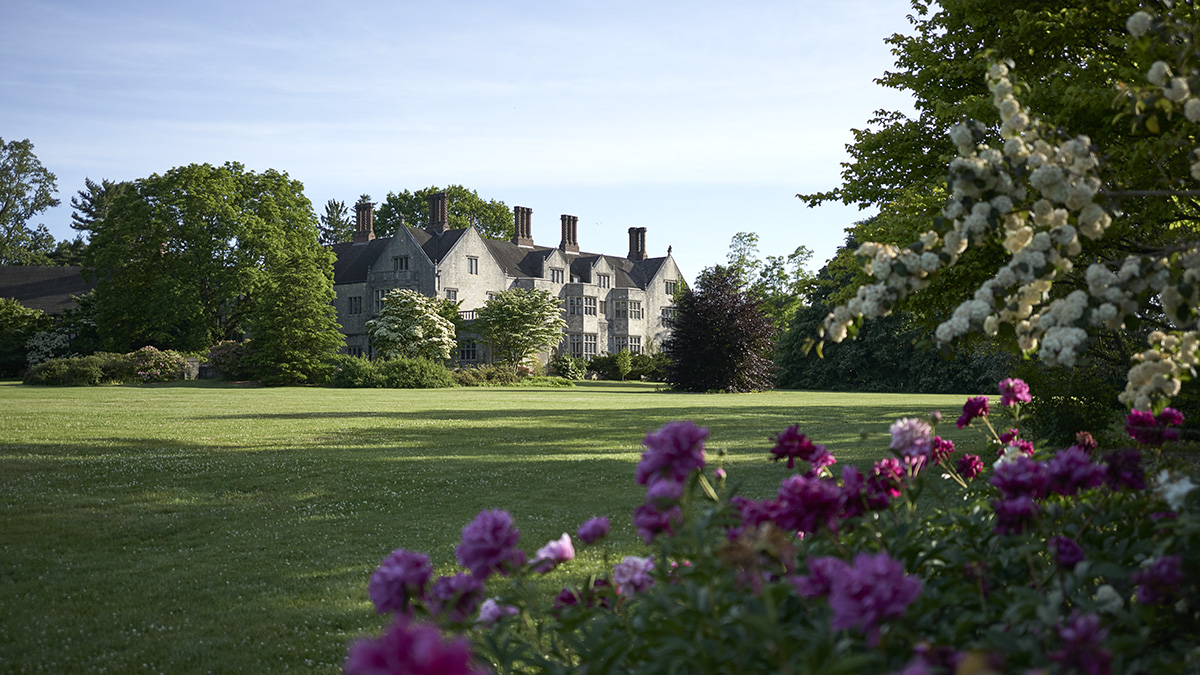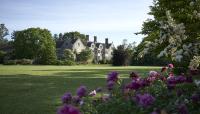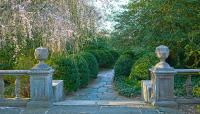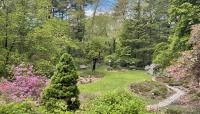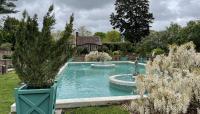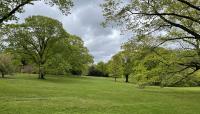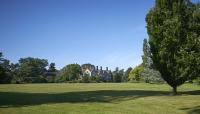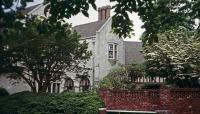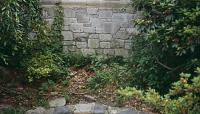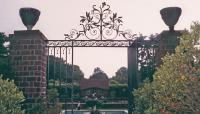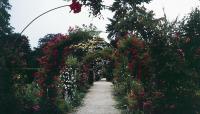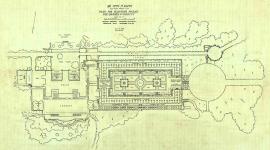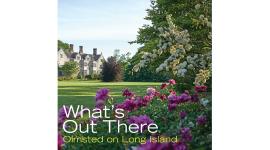Landscape Information
From early usage as fishing, hunting, and cultivation grounds for indigenous tribes, to the farmsteads of the 17th to 19th centuries, the patterning of this landscape evolved further with the 1904 purchase of 350 acres by attorney James Byrne to create a country retreat. By 1908 a residence and ancillary structures designed by architect Grosvenor Atterbury were constructed, surrounded by gardens, lawns, and winding drives shaped by landscape architect James Greenleaf. William Robertson Coe, an English entrepreneur, purchased the property and additional acreage in 1913. He hired Guy Lowell and Andrew Robeson Sargent, both planting experts, to introduce new buildings, greenhouses (such as the Camellia House), and gardens (Italian Blue Pool Garden ), establishing a framework for distinctive horticultural character. An ardent gardener, Coe imported plant material from England to enrich borders, woodlands, and greenhouses, while augmenting his tree collection with transplanted mature specimens.
In 1918, when the house burned and Sargent unexpectedly died, Coe turned to Walker & Gillette to rebuild a larger residence in the English Tudor Revival style, and to James Frederick Dawson of Olmsted Brothers for the landscape. Dawson worked until the mid-1930s to integrate new and existing garden features and structures, often highlighting specialized plant groupings with diverse seasonal interest, balancing these decorative elements with sweeping naturalized spaces. Specific greenhouses were added as destinations, rather than purely utilitarian structures, with Dawson even advising on breeds of sheep, reflecting the importance of a productive landscape. A carefully engineered circulation system was significantly realigned, with installation (c. 1927) of the monumental eighteenth century wrought iron English Carshalton Gates for the west entrance.
In the 1940's Coe deeded the estate to New York State with the provision that it be maintained as public property for educational purposes. A SUNY college occupied the grounds from 1955 until c. 1970, when it reopened as a state arboretum. Today, additionally supported by the Planting Fields Foundation, this 409-acre property is an example of how to manage a complex designed historic and natural landscape for sustainability, resilience, and public use. Planting Fields was listed in the National Register of Historic Places in 1979.



